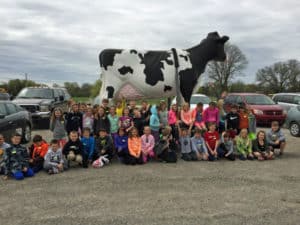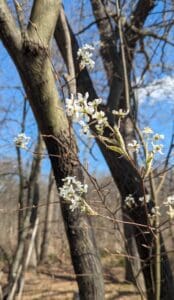By Jennifer Fairfield
(Publisher’s note: This is part two of this column. Part one published yesterday.)
Lawn:
If you have bare patches in an existing lawn, overseeding is the best way to fix them. Rake away or pull any dead grass and roots, then sprinkle some seed in.
Adding a little bit of top soil will give the seed a better chance to take hold. Cover the area lightly with a little mulch to keep moisture in. I like to use straw, as it’s inexpensive, and lightweight – you don’t want to use something that will be so heavy that the grass is smothered by it as it starts to emerge. Keep the area well-watered, and remove a little of the mulch as the grass starts to come up, giving the grass room to grow, but also helping to retain moisture.
Continue to mow at a height of about 3.5 to 4 inches until we get killing frosts. Keeping your grass a little higher as we go into cold weather helps the roots have insulation against the cold this winter.
Don’t leave it too long though, as that can promote something called snow mold disease, which will leave ugly bare patches in your lawn next spring.
Rake up the leaves that fall and use them as mulch or add them to your compost pile. Leaves left lying on the lawn can also promote snow mold disease. Run over them with a mower to chop them up, as whole leaves tend to mat down and can suffocate the plants you are mulching or your compost.
Birds:
Start feeding the birds again, if you stopped for the summer. Migrating birds will appreciate the additional food as they make their way to their winter habitat, and those who stick around will be able to build up fat reserves against the cold days and nights to come.
Please remember to keep them clean to help keep the birds healthy. Cleaning them as frequently as weekly, using a 10% bleach/water solution and rinsing well, will help keep diseases that are harming many of the songbirds around the country at bay.
Clean out bird houses that were used for nesting this summer. Removing nesting debris will give some of our over-wintering birds a place to keep warm at night during the winter.
Keep birdbaths full and clean. Clean birdbaths are as important as clean bird feeders for keeping birds healthy. The same 10% bleach solution, with the help of a scrub brush, will kill off harmful bacteria in your birdbaths. Just remember to rinse well!
Continue to clean and fill your hummingbird feeders.
Did you know that most of the Ruby-throated hummers who call Michigan home for the summer fly all the way down to Central America for the winter, and they cross the Gulf of Mexico to get there – they don’t usually fly along the coast?
That means that they are flying non-stop for hundreds of miles! I have a hard time wrapping my head around that, mostly because of how small they are. I can’t imagine them having enough energy to make that trip, but apparently, they do. You can help them with all that flying by making sure they have something to eat as they set out on their journey.
The sugar-water you put in their feeders helps them build up body fat, which they will depend on for that long flight. And since some of the birds actually spend their summers even farther north than SE Michigan, leaving your feeders out longer into the fall can help the ones who are migrating through here later.
Leave them out well into October – just be sure to bring the feeders in at night when we start getting freezing overnight temps.














